Viy (1967)
Directed by: Georgiy Kropachyov, Konstantin Ershov
Written by: Georgiy Kropachyov, Konstantin Ershov, Nikolay Gogol
Starring: Aleksey Glazyrin, Leonid Kuravlyov, Natalya Varley, Nikolay Kutuzov
SOVIET UNION
AVAILABLE ON BLU-RAY: 15TH MARCH, from EUREKA ENTERTAINMENT
RUNNING TIME: 77 mins
REVIEWED BY: Dr Lenera
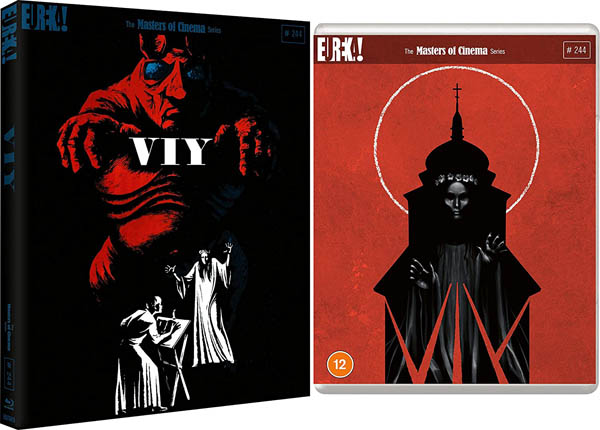
Seminarian student Khoma spends a night in a barn where he encounters an old lady who casts a spell so that he flies with her on his back. Frightened, he beats her to near-death and she turns into a beautiful young woman. A few days later, Khoma is told that a rich merchant has a daughter who’s dying and needs prayers for her soul, and that she specifically asked for Khoma by name. She dies before he gets there, but guess who she turns out to be?. Her father promises him much gold if he’ll stand vigil and pray for her soul for the next three nights and brutal punishment if he refuses….
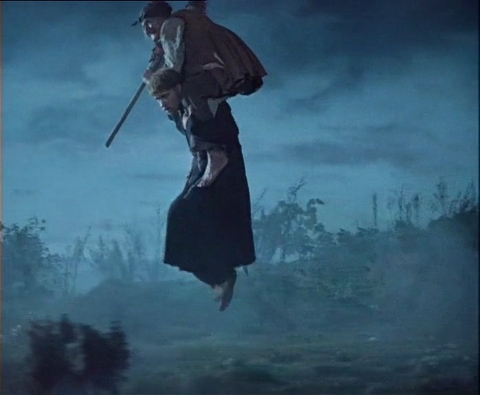
I specifically requested if I could have a screener of Viy to review because I was extremely interested in seeing it. This was partly because it’s the only Russian horror movie in a country where horror is considered a subversive genre that Russians should not spend time making, and partly because [as any longtime reader of this website will know] I worship at the altar of Mario Bava and this was based on the same source as his breakout film Black Sunday [it’s generally known as his first directorial effort but us Bava-ites know that he ghost directed several times before], Nicolai Gogol’s short story The Viy, which itself was clearly inspired by the Baba Yaga legend of a supernatural ,shape-changing old lady who can range from helping a man finding his missing bride to being a child-eating monster. In fact as I type I don’t really know why Gogol was credited on the titles of Black Sunday because Bava’s film has hardly anything to do with it. In any case, Viy [I’m choosing to forget the crappy 2014 Jason Fleming-starrer that sometimes retains the same title] is an absolute treat for lovers of Gothic horror, those who still thrill at words and names like Hammer and Edgar Allan Poe [of course I plead guilty] that’s also in places surprisingly similar to some later Hong Kong efforts like A Chinese Ghost Story, though I don’t know if they were actually influenced by what was a relatively rare film at the time. It mixes dark fantasy and almost documentary-style realism into a surprisingly cohesive whole, has a few genuine scares, and even some wit and humour. The only major flaw is perhaps its brevity; shortness is not automatically a problem, but this film seems to be cut short just as soon as it really gets going.
Once again I’m not going to spend time doing my usual background research because I’ve had a lot of reviews to get through this week, and background information seems scarse on this one anyway, but I wouldn’t be surprised if my review of this film which fascinated me from beginning to end is as long as usual. A scene-setting quote from Gogol introduces the proceedings over various shots of cobwebbed interiors which we later find out are of the film’s main setting. The music by Karen Khatchaturian, nephew of the great Aram Khatchaturian, also sets the tone appropriately; bursts of brass are brief rather than being dominant and separated by more anxious musical phrasing and eerie piano chords. Outside the front of a large church, a rector points out to a crowd of students how two of them, “Disguised as devils were caught stealing chickens” and, “The other three got a deacon drunk and then goaded him into singing bawdy, indecent songs”, before, after saying prayer, they all run off for some brief freedom, grabbing animals to eat from stall sellers and even trying to catch women. These aren’t your archetypal religious students, especially in a film like this when religion is usually treated with reverence because it’s the greatest weapon against evil. Then there’s a telling scene a bit later where two grubby peasants present the rector with some food and he tells them he’ll send them some books in the future, rather than giving lending them there and then. Is the script by Aleksandra Ptushko, Georgi Kropachyov and director Konstanitn Yershow actually hinting that Christianity here is mean and greedy? It’s pretty brave considering where and when Viy was made.
Anyway, we follow three students; Khoma, Khaylava and Gorobets, as they separate from the others and then get lost in the dark as the mood suddenly becomes menacing. The sound of a dog barking indicates that they’re nearing somewhere. Their noise awakes an old lady [who’s obviously and jarringly played by an old man] who lets them stay, though separately. She then comes on to Khoma and puts him under a spell, making him lie down so she can climb on his back. She rides him around the countryside like a horse before Khoma suddenly realises that they’re flying and that she’s a witch. As soon as they land, he grabs a stick and beats her violently. As she cries out that she’s dying, he looks and sees that she’s turned into a beautiful young woman. However, this deed soon comes back to haunt him. A rich merchant has a daughter who’s dying and needs prayers for her soul, and she specifically asked for Khoma by name. He refuses to go, but the rector threatens him with a public beating, so he relents and finds that he’s returning to the farm where he met the witch. He gets there to find that she’s just died, and to his horror that she’s the witch, and that he’s the cause of her death, though he tells no one. Her father promises him great reward if he will stand vigil and pray for her soul for the next three nights. If he does not, grave punishment may result. Khoma is sweating buckets and it looks like he may give himself away anyway, and it almost seems as if the father notices this. Nonetheless he complies, despite being told about a huntsman who fell in love with a young girl. When she came into the stable and asked his help to get on her horse, he said he would like it more if she rode on his back, then took her on his back and ran off with her, never to came back.
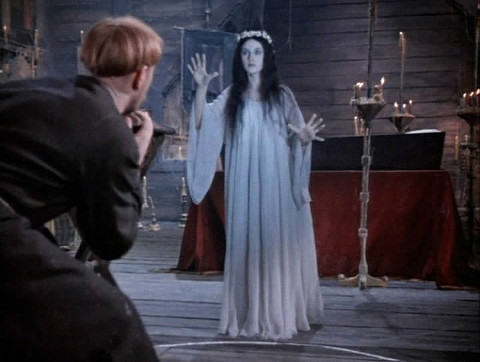
The church is a terrific setting for horror, lined with religious paintings which look menacing rather than comforting, while the place looks like it’s fallen apart. The naturalistic lighting becomes more stylised as the colours from the pictures reflect on the floor and we begin to be a bit afraid. Cats scurry across the floor, birds and bats flutter, but the woman, named Pannochka though you may sometimes think of her as Snow White, looks so hamrless and serene lying there – until she gets up from the coffin and, despite seeming to be blind, tries to break into an invisible circle Khoma draws on the ground, a really fantastic scene of horror enhanced by the uncanny, jerky movements of actress Natalya Varley and the camera spinning round and round ever-faster. The men of the rich man’s estate who escort Khoma to and from the chapel surround him and asked what happened that night, to which he replies, “Nothing much. Just some noises”. Of course Khoma wants to leave and does give this a try but, “This is not the kind of place you can escape from”. He has to remain, his mantra having to be, “A Cossack is never afraid of anything” as he awaits the terrors of the night with only song, booze and hopefully a bit of nodding off to help him out. Finally things begin to really cut loose with a quite astonishing assortment of supernatural monstrosities, some of them literally coming out of the woodwork, and some of them genuinely nightmarish in appearance. Of course they’re all people in costumes even though they were obviously asked to move as uncannily as possible, two skeletons [one of which is definitely not meant to be that of a human] are clearly being manipulated on strings, giant arms are often being superimposed on the image, but isn’t this more interesting than having it all rendered by computers when the visuals often just as obvious or even more so? Scenes of flight have excellent matte work and are aided immensely by a very mobile camera.
The eventual appearance of the hugely powerful Viy demon is maybe a bit of a disappointment after the build-up that we get, and when it says, “Raise my eyelids or I cannot see”, one seems to be invited to laugh, even though it clearly links to the undead Pannochka possessing the power of sight. I wonder if why this is so? Was it thought necessary seeing as Yershow and company were pushing their luck with this film anyway? Of course it’s possible that Stalin would have vetoed the whole endeavour anyway if Gogol hadn’t been one of his favourite writers and the project being an adaptation of classic Russian literature. What’s quite unusual is the way that, despite the fantastical nature of the story, there’s an emphasis outside of the church on realism. We linger on the village setting, the people, and in particularly the funeral, for some time. Some people watching this film may begin to twiddle their thumbs in some places, even with the knowledge that there’s no way a large amount of supernatural terror would have been allowed on the screen, though I can’t say that I was ever bored for a minute. The cinematography is credited to two people – Viktor Pishchalnikov and Fyodor Provorov – which might explain why it’s shot so differently inside the church than out. It lovingly evokes rural Ukraine, the farmhouses, the livestock and the ruddy, wrinkled, jovial faces of the peasants as they sing with enthusiasm [despite their impoverished life] and drink – in fact there’s so much singing and drinking [at one point we adopt Khoma’s blotto point of view as everything is tilted and one shot is tripled] it sometimes feels like we’re watching an extremely boozy musical. Khatchaturian’s music, which leaves a lot of material unscored, seems to draw on the sound of Prokofiev and Rachmaninov. The climax virtually repeats the string patterns from Mussorgsky’s ‘Night on Bald Mountain’ which was clearly intentional.
The cast members all seem well chosen with Leonid Kuravlyov as Khoma helping greatly to make the character’s actions believable. When he says to someone that he’s been visiting a married woman on Maundy Thursday, we don’t know if he’s lying or telling the truth, but we believe that this is something that this person might well have done anyway, seeing how libertarian he is, hardly the model religious student. Perhaps his best scene is one that’s rather uplifting. Despite being exhausted and terrified from the night he’s just had, Khoma gets up off the ground and begins to dance enthusiastically while a man playing the flute automatically begin to play and other villagers just watch with amusement but also, I think, some respect. He may seem doomed but he’s now got the Cossak spirit. It’s uplifting because it seems to be the moment when Khoma totally accepts his lot and celebrates the Now. What’s especially unsettling is that even if Khoma had been more religious it’s doubtful that it would have done much good. Religion doesn’t seem to be any real defense against the forces of darkness; there’s no local priest or traveling witch hunter to aid, and no rules that may protect to memorise except Khoma’s magic circles [which he obviously knows of already]. Even the final scene rams home the idea that the best defense against evil may be to just not be afraid, leaving the viewer of Viy with a nice chill running down their body as they say to themselves, “Fat chance”.
Rating: 









SPECIAL FEATURES [LIMITED EDITION OF 3000]
Limited Edition Exclusive O-Card slipcase
1080p presentation on Blu-ray
Viy was also recently released on Region ‘A’ by Severin Films. Eureka have probably ported over Severin’s transfer and given it a new encode. The image is fairly sharp and very detailed with very minor grain cluster on a few occasions. A few shots are out of focus, most notably a close-up of Khoma; maybe this was a fault of the original elements, maybe it was a mistake, or maybe it was intentional. But the dark scenes fare extremely well with no black crush. Overall a very good presentation.
Original Russian mono audio
Optional English mono audio
I checked out the English dub on a few scenes and it’s really quite good; voices are well chosen and the words are almost the same as the subtitles. Not the preferred option, but I don’t think that seeing the film with this track will weaken your enjoyment and appreciation of it.
Optional English subtitles and English SDH
Brand new audio commentary with film historian and eastern European cinema expert Michael Brooke
Severin’s release had an interview with Richard Stanley about the film, a documentary about Russian sci-fi and fantasy films, and the silent movie excerpts detailed below. Eureka lose the interview and documentary but more than make up for it with the supplements they’ve added. Brooke often talks fast during his commentary because he has so much to pack in, be it making of information or comparisons with the short story or observations. We learn that it was partly made as a reaction to Black Sunday which was considered to be a travesty of the source material [it is really]. We learn why Khoma is often called “philosopher” in one of several details that assume the viewer has read the story, that it was initially intended as a subtler adaptation before the first director was replaced half way through shooting, and how Natalya Varley falling off her aerial coffin and being saved by a co-star who had to spend a week in hospital for his trouble caused her to think the film was cursed, something that was confirmed to her when the film was shown on a ship.
Brand new video essay: Samuel Goff on Nikolai Gogol [15 mins]
I knew very little about this much respected writer, so was happy to learn some information from this featurette, though I wish it hadn’t remained on the same portrait of Gogol for its entire length! “Deeply moving and ridiculous, often in the same sentence” sounds like an author I’d love. His writing career is skimmed through with special emphasis on his apparently uniquely unpredictable style.
Remembering Nicolai Gogol [1939] [19 mins]
Shots of the opening of a ceramic school named after him, a memorial museum and even a stage musical, plus the Ukrainian countryside, drawings and paintings accompany this very old run through of his life and importance, Well put together and not insufferably patriotic.
Three Russian silent film fragments;
The Portrait [1915, 8 mins]
The first of of what are surviving bits from three silent macabre-tinged films, two of which were way over an hour in their full incarnations. This one is from a Gogol story about a penniless artist who buys a magical painting which is able to make him rich and famous. You don’t get all of that here seeing as so much footage is missing, what’s left seemingly chiefly from the beginning. But scenes of the painting exuding an influence over the artist and the man in it coming to life and stepping out into the artist’s room are quite eerie.
The Queen of Spades [1916, 16 mins]
This tale was memorably filmed in Britain in 1949, so if you’re familiar with that version then you’re be able to fill in the gaps here. It’s about a military officer who hears of a Countess who won her fortune by playing three particular cards, the identity of which she refuses to reveal. He confronts the Countess who dies of fright. but her ghost appears to reveal what the cards are and he gives them a go. From what we can see, this tells the tale pretty well.
Satan Exultant [1917, 20 mins]
From the same director as The Queen Of Spades is this darkly funny, sometimes erotic and surprisingly subversive tale of Satan manipulating his way into a pastor’s family. Of course there’s much that is missing including the second part of the story, which depicts the consequences of a forbidden affair, and we don’t even see whether the pastor buys a portrait of the devil or not that seems to obsess him. But Alexandr Chabrov is fun as the lead character and the thing has a terrific playfulness about it which may surprise.
Newly commissioned sleeve artwork by Peter Savieri
A collector’s booklet featuring a new essay on Aleksandr Ptushko by Tim Lucas, and a new essay by Serbian writer and film critic Dejan Ognjanovic
LIMITED EDITION EXCLUSIVE BONUS DISC: A HOLY PLACE [Sveto mesto] (1990, dir. Djordje Kadijevic) A adaptation of Nikolai Gogol’s short story and a stunning example of Serbian Gothic cinema from director Djordje Kadijevic. Described by critic Dejan Ognjanovic as “an unparalleled excess of perversity and terror”
So this very limited initial pressing [Eureka will probably re-release Viy but minus this second disc] contains a second version of The Viy from Yugoslavia, which starts off in very similar fashion before becoming more and more different. Many of the expected scenes are there, but writer/director Djordie Kafijevic minimises the fantastical elements while enhancing and adding elements of sexual perversion, and also enlarging the role of the witch considerably, giving her a much larger back story and even some reasons for why she became an evil force, though some details are still vague. Having a villain who’s both frightening and sympathetic is hard to pull off and Kafijevic doesn’t entirely succeed in doing this, especially when most of his horror scenes are lacking and rely on too much usage of close-ups despite attempting to conjure up a strong Gothic atmosphere with lots of fogs, cobwebs and an eerie new detail of ‘Catarina’s’ carriage showing up eerily in the early scenes.
We go straight into the three students lost at nighttime and eventually finding shelter for the night. This time the old hag and our ‘hero’ Toma don’t take off, they remain earthbound, and when she turns into the pretty young lady after Toma has repeatedly bashes her with a club, Toma tries to have sex with her! Things are then almost the same for a short while, though the rustic village is now a proper town and Toma is allowed to dine in style and is given a pretty maid to ogle, though this character becomes very important later. The church is far less impressive and we’re far less frightened inside it, while we don’t even get any demons! However, we do get increasing use of flashbacks alongside the expected plot which begin by just showing how other townsfolk encountered terror in the form of Catarina, but evolve to revealing a disturbing family saga as well as critiquing the misogynist attitudes of the period which would stigmatise women whose sexuality didn’t fit into what were considered normal notions. Catarina seems to become a witch partly because of her father’s actions, but also partly because only as a witch can she act freely, though this often takes the place of jumping up and down on people while they’re lying down which she clearly gets sexual kicks out of. However, Branka Pujic doesn’t quite do enough with the role which leaves things not having as much power as perhaps they should, and having perhaps more ambiguity than was actually intended.
Still, having ingredients such as lesbianism, nudity, incest, rape and necrophilia, even if not all seen, was probably highly unusual in Balkan cinema of the time and does add to a rather heady feeling of depravity which I did very much like. Kafijeciv’s direction is simplistic and performances in general are just average rather than good, but this version of The Viy is still very much worth checking out, even if the print has clearly seen far better days with lots of specks and lines. It might be quite constructive to watch just after the 1967 version, seeing as much of its second half could also be flashbacks telling the backstory of that movie too.
New Interview with A HOLY PLACE director Djordje Kadijevic (Limited Edition Exclusive Only) [23 mins]
Kadijevic talks of how his approach to World War 2 movies was not what the authorities wanted and he wasn’t allowed to make any more, so he turned to the fantastique. His reason for showing evil as beautiful is interesting, but he’s a bit ‘up himself’ when he looks down on mere ‘horror’ and describes his work as not being horror but an “authentic depiction of a mystical experience”. Okay then.
Viy is fascinating, eerie and will stick in the mind. It’s a must-see for the true horror fan. Eureka’s release most definitely does it justice. Highly Recommended.


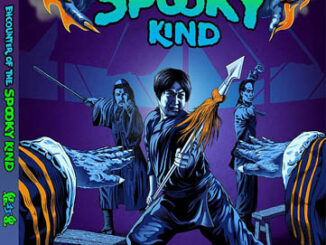

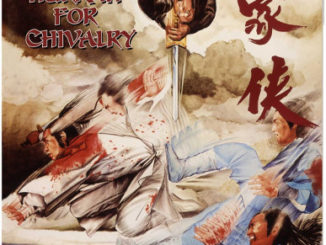
Be the first to comment